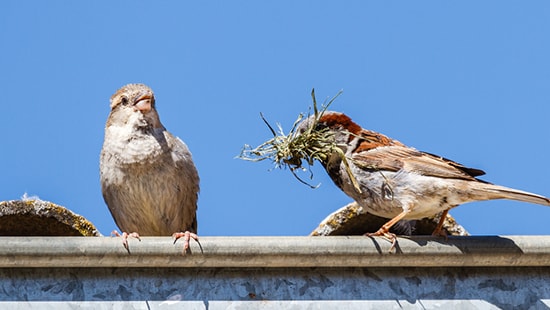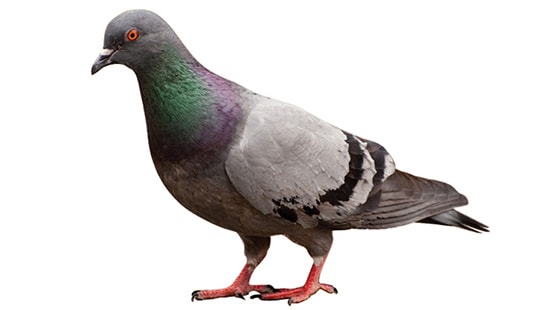Protecting Your Business from Birds
The Pest Monitor Newsletter

Although most birds are protected by federal law, three non-native species are considered to be nuisance birds and are exempt: house sparrows (Passer domesticus), European starlings (Sturnus vulgaris), and pigeons (Columba livia).
All three of these species have become commensal, not only adapting to, but having become dependent on life around humans. Because of this, they can cause significant problems from structural damage to health hazards – all of which create risk for food facilities, including:
- Public Health Risks – The birds create unsanitary conditions around buildings with their nesting, roosting, and feeding. Through their presence, as well as excessive droppings, they can spread more than 60 diseases, posing a serious food safety and public health risk.
- Compliance Risks – The CGMPs of FSMA’s Preventive Control Rule (21 CFR 117.35(c)) specifically state, “Pests must not be allowed in any area of a food plant.” As such, a bird flying around your facility or flocks nesting or roosting where food could be contaminated could be enough to cause a failed inspection or audit.
- Financial Risks – Not only can birds contaminate grains in your upstream supply chain and your own storage, their roosting on facilities can corrode the structure through their acidic droppings and nest-building, leading to costly repairs or even food recalls.
- Brand Risks – A food recall caused by bird contamination; failed inspection or audit; or even damaged building leading to other contamination could all impact the trust of your customers and consumers, significantly impacting your brand reputation.
While pest birds can cause serious problems, there are solutions. Ecolab recommends a four-step program for pest bird prevention and control:
- Assess. A full inspection and site survey should be conducted to determine the extent of the bird presence and impact. Particular attention should be paid to nesting and roosting areas and resulting structural and sanitation concerns and food safety risks.
- Reduce. From the assessment, a strategy should be developed to reduce and deter bird populations. This would include removing nests, cleaning areas of bird activity, and implementing mechanical controls and targeted baiting where approved.
- Defend. Once the populations are reduced, ongoing monitoring should be continued to detect any bird return. This is particularly critical as seasonal changes can bring new populations seeking a nesting and roosting sites.
- Protect. Ongoing prevention techniques, particularly around entry points and food safety sensitive areas will serve to continue to keep your business protected.
Bird management can be a sensitive and challenging issue, but the implementation of a full control and prevention program can protect your business and your brand.


